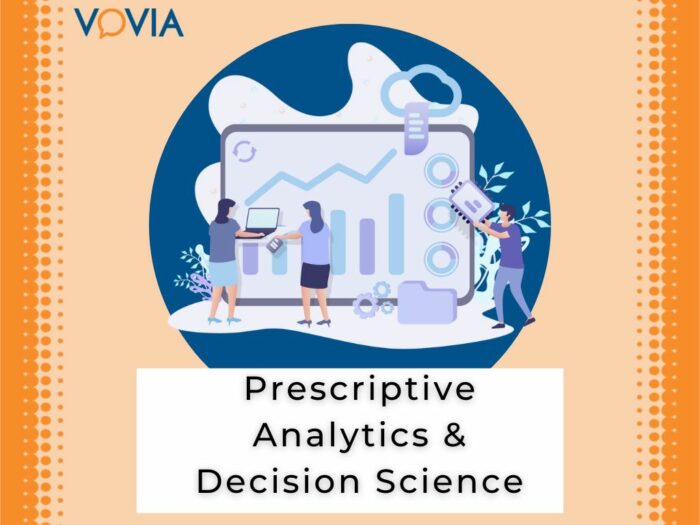Decision Science and its Role in Prescriptive Analytics
Data is the new oil. Clive Humby, a British mathematician coined this phrase in 2006. We have been hearing this since then, and everyone has jumped on the data wagon. However, data in its crude or raw form is useless. Data needs to be cleaned, mined and then it can finally be used to derive powerful & meaningful insights and, ultimately, help make business decisions.
In my last blog on “moving to a prescriptive analytics state of mind”. I explained what prescriptive analytics means and how businesses can benefit from doing so.
In this blog, I will explain in further detail, how data helps in decision science and plays an important role in prescriptive analytics.

What is decision science?
Decision Sciences is an interdisciplinary field that draws on economics, machine learning, statistical decision theory, operations research, forecasting, behavioural decision theory, and cognitive psychology. In simple terms, it’s the discipline of turning information into better actions at any scale.
Decision Science aims to prescribe a principled framework for decision-making based on the different types of decision-making approaches with some objectives, constraints & available information. Decision Science is a prescriptive knowledge of decision making based on a descriptive and normative understanding of decision making.

It draws on three fundamental questions. First, how should a “rational” person make decisions? This question is at the heart of economics and often serves as a baseline for evaluating human decision-making. Second, how do people really make decisions based on behaviour? Finally, given what we know about rational decision-making and actual behaviour, how can we help people, especially managers, improve their decision-making? Decision researchers employ a variety of techniques to improve decision-making, ranging from sharpening statistical intuition to quantitative decision analysis.
Prescriptive Analytics and Decision Science
Prescriptive analytics and decision science will ultimately help us with specific recommendations for changing the future and empowering teams to help make better decisions. Data is the key tool to making these decisions. Decision Scientists usually look at various ways of analyzing data as it relates to a specific business question posed by their stakeholders and find insights as they relate to the decision at hand. Data Scientists focus on finding insights and relationships via statistics. The Decision Scientist, therefore, needs to take a 360 view of the business challenge. They need to consider the type of analysis, visualization methods, and behavioural understanding that can help a stakeholder make a specific decision. Decision Scientists usually make these insights useable.
Examples
Below are a few examples of how decision science & prescriptive analytics can be used by businesses.
Artificial intelligence has the ability to make complex decisions, from medical diagnosis to recommending which show to watch next on Netflix or which product to buy.
If you have scrolled through a social media app like TikTok or used a dating app, you have likely experienced prescriptive analytics through algorithmic content recommendations. The “For You” feed on TikTok is one example of prescriptive analytics. TikTok explains that a user’s interaction on the app, much like lead scoring in sales is weighted based on the indication of interest. If you finish a video that’s a strong indication of interest. Videos are then ranked to determine how likely you’ll be interested in each video and delivered to each unique “For You” feed. This prescriptive analytics use case can make for higher customer engagement rates, increased customer satisfaction, and the potential to retarget customers with ads based on their behavioural history.
Another similar example is a product recommendation system used by eCommerce websites. Based on historical data like purchases, likes, dislikes, reviews, comments, etc you will be suggested a product to purchase. Using propensity models, the recommender system can provide people with suggestions for items that are likely to be of interest to them; hence, a primary function of recommender systems is to help people make good choices and decisions. Collaborative filtering is one such approach that gives suggestions based on an assumption that people who agreed in the past will agree in the future and that they will like similar types of items to what they have liked in the past. So if you have purchased a product in the past and liked it, more similar products will be recommended to you.
Implementing such complex algorithms can have its own challenges. You need to have reliable data and need to understand the complexity of the techniques used. While decision science has growing importance and broad application in businesses and can be used to make automated decisions, we need to keep in mind that humans are ultimately the ones who train these algorithms. As rightly said by Cassie Kozyrkov “AI bias doesn’t come from AI algorithms, it comes from people”.
How could or how does the use of prescriptive analytics and decision science help your business? Let us know in the comments!
